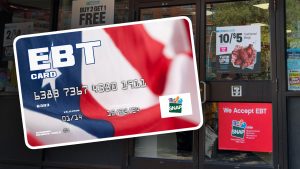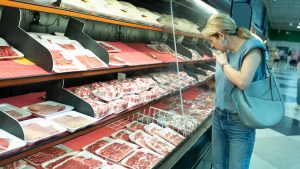America’s appetite for beef grows while cattle supply hits a 70-year low

What is happening on Nebraska farms today reflects a national trend: Americans are buying more beef even as fewer cattle are being raised. On a sunny morning outside Oak Barn Beef in northeast Nebraska, the sound of rumbling freezers and cattle gates paints a picture of a state where beef is more than a product.
It is part of daily life and part of the economy that shapes communities across the plains.
But today, the demand for beef is rising faster than the herds that supply it. That imbalance is rippling from small family operations to national markets and global trade negotiations.
Hannah Klitz sees that pressure up close. She owns Oak Barn Beef in West Point, Nebraska, and describes the operation as the continuation of a long family line.
“We’re a fifth-generation cattle-raising family, and we sell and ship our beef nationwide,” Klitz said. “We also sell products like tallow and other kitchen necessities, farm-raised products, but beef is our bread and butter.”
Cattle supply hits lowest level in more than 70 years
The latest USDA cattle inventory shows how tight the supply has become. As of January 2024, the United States had about 87.2 million head of cattle. A 2% drop from the year before and the lowest level since the early 1950s. The calf crop also fell 2% to 33.6 million, indicating a smaller generation of cattle coming into the market.
Klitz said producers feel those numbers long before consumers see prices rise.
“The U.S. cattle herd is at a historical low, which can affect again those live calf prices,” she said. “When supply is lower and demand is still high, then the price increases, which does affect us from the beginning.”
Drought has added to the strain. Dry years have forced ranchers to sell animals earlier than planned, further shrinking herds.
“With drought-ridden years, you feel those effects so many years afterwards,” Klitz said. “If people don’t have enough water to feed their animals, then they have to sell those animals.”
Prices climb as Americans keep buying beef
Even as supply tightens, Americans have not stepped back from beef. Demand is the highest it has been in 20 years, and consumers continue to buy nearly the same amount of beef at higher prices.
Elliot Dennis, an associate professor of livestock economics at the University of Nebraska-Lincoln, said two forces are shaping the market: fewer cattle and a strong consumer appetite.
Consumers “love beef and they’re willing to pay premium prices to keep it on the table,” Dennis said.
That strong demand is meeting constrained supply, keeping prices high for producers and at the grocery store.
Global trade adds another layer of pressure
International trade is also influencing the market. A new proposal involving Argentina would raise the import quota for Argentine beef from about 20,000 metric tons to 80,000 metric tons. That would allow four times more beef into the United States, though Dennis said the impact would likely be limited because Argentina still represents a small share of total imports.
“Argentina represents about half a percent of the import trade […] this would bring it up to just over one percent,” Dennis said.
He noted that the proposal could lower cattle prices in the short term but said the effect would be temporary.
Producers like Klitz still feel the upstream effects of global changes. “Those different factors can affect the commodity market pricing, which then in turn affects our business too,” she said. Buying cattle for future years, she added, has become increasingly expensive.
Nebraska is one of the nation’s top beef-producing states, so shifts in cattle supply here influence both local economies and national markets.
Nebraska beef has strong footing in export markets
While import changes draw attention, Nebraska producers rely heavily on exports. High-quality beef from Nebraska often ends up in markets such as Japan, South Korea and Canada. Those exports bring in more value than the lower-cost beef trimmings that typically come into the U.S.
At the local level, Oak Barn Beef combines that larger market landscape with a farm-to-table model. That approach grew during the pandemic, Klitz said, when consumers wanted more transparency about where their food came from.
“We saw a lot of changes in demand and how consumers shop,” she said. “The pandemic brought on a lot of the farm-to-table movement and people wanting to know where their food comes from and have trust in those sources.”
Tight margins and a long road ahead
Even with strong demand, many small producers face narrow margins. Feed, processing and cattle costs remain high.
“With our input costs being so high, it does make our margins so slim that there’s not a lot left at the end of the day,” Klitz said.
Livestock economists expect cattle prices to remain high into 2026 as the supply cycle continues to adjust. Even if the weather improves and ranchers start rebuilding herds, growth takes time. Raising a calf to market weight can take years, and the effects of drought and past herd reductions linger.
For Nebraska producers, the long planning horizon is part of the job. As Klitz said, a single animal represents months of work and investment before it ever becomes a cut of beef sold in the state or shipped nationwide.
The post America’s appetite for beef grows while cattle supply hits a 70-year low appeared first on Straight Arrow News.





